Everything You Need to Know About Small Press Distribution
On Twitter the other day, I was asked, “How do you get your books out?”
I struck me that today, after six years of self and then small-press publishing, that question requires a complicated answer. What I’d like to do is break down all the various distribution options ComixTribe is currently employing for our books, and look at the pros and cons of all of them, from our experience and perspective. (Your experience might be quite different.) This is a long one…so let’s get right into it.
SMALL PRESS DISTRIBUTION
Online Sales
By online sales, I’m referring to direct to consumer sales of physical (or digital) product from your small-press website or online store. Shop.ComixTribe.com is a good example of an online sales channel. In most cases, these transactions are powered by Paypal.
The costs to launching on online sales portal today are shockingly low, and the options are plentiful (Big Cartel, StoreEnvy, Shopify, Etsy, Ebay, etc.) However, there are still costs associated with stockpiling the actual product you are selling, though pre-orders through these channels are an option to mitigate those costs.
Barriers to Entry: Very Low
Practically anyone with a Paypal account or a credit card can open their own online store.
Distributor/Other Cut: Low
In most cases, it’ll cost you between 3%-8% per transaction at an online store, which covers transaction fees. But by selling direct to the customer, there are no other middle men who need a cut.
Sales Volume Potential: Low
Remember when I said practically anyone can open their own online store? Yeah, that means there is a LOT of competition for the mighty online dollar. That fact that you have a shop and are selling things in isn’t remarkable. And driving traffic to your store is tough.
The Upside:
Why NOT have an online store? They are relatively easy to set-up and maintain, and when a part of a focused campaign or promotional push, can be a good way to sell product to anyone, anywhere.
The Downside:
Not much downside to having an online store…except for the disappointment when online sales are few and far between. Sales volume can be a challenge to anticipate, and you’ll also need to handle shipping/order fulfillment.
Conventions
Ah, the mighty comic convention…where thousands flock to celebrate the medium of comics, and creators take to artist alley to peddle their wares to the masses.
Upfront Costs: Med – High
There are potentially significant costs associated with conventions. Table fees can range between $20 and $1,200 for some of the larger shows. (Some shows will even comp your table.) You’ll need to invest in books and merchandise (with no guarantee that any of it will sell). There are travel and hotel costs. Convention gear (banners, book stands, table cloths, etc) can really add up. And of course there’s the opportunity cost of spending 8-10 hour days behind a table, when you could be creating.
Barriers to Entry: Low – Medium
The barriers to entry will vary with the show. Some small shows require nothing more than a willingness to plop down a table fee, while other shows are curated and tough to crack into. In general, though, all you need is a book and there’s a convention out there that will let you set up shop.
Distributor/Other Cut: None
The good news is that, once you’ve set up at a show, every dollar customers put in your hand is yours to keep.
Sales Volume Potential: Low – Medium
Selling 100 copies of a book at a show can be considering blockbuster sales. Fact is, most conventions are small, and so your total sales volume potential is actually fairly limited. Now, if you really work the convention circuit and attend a lot of shows, you can get those sales numbers up there a bit. But cons are more about the quality of a sale made directly and in person, than the mass quantity of those sales.
Profit Potential: Low – Medium
A lot of small press folks struggle to break even at conventions. In my experience, having the right product mix for the show you’re at is paramount, and making sure there are plenty of high margin items on the table (prints, artist editions, original art, etc) to complement lower margin book sales is the only way to eek out a decent profit.
The Upside
- Direct access to your target market (comic book readers.)
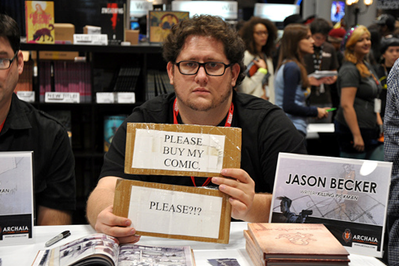
- An opportunity to sell and promote your work…no one should be able to sell your book better than you can.
- Other benefits: Networking with creators, publishers, and retailers
The Downside
As Ron Marz once wrote, A lot of Artist Alleys, and really cons in general, are equal parts sheer, unbridled enthusiasm and quiet desperation.” The downside of cons are that they are:
- Time-consuming, and potentially exhausting.
- Conventions are expensive…if you’re not careful, its very easy for convention fees, travel costs, merchandise, and other costs to strip away most, if not all of the profit you make there.
Kickstarter/ Crowdfunding
I see Kickstarter (or other less-popular/effective crowdfunding sites) as a unique distribution channel, and its certainly the channel that’s captured most independent and small-press creator’s imaginations as of late. The specific, focused, goal-oriented nature of Kickstarter, combined with tiers of pledge level support, the opportunity for up-selling, and strong social media integration make it its own legitimate platform.
Now, some have argued that the intention of crowdfunding is not for distribution, it’s for funding the creation of a project. (I’ve even seen creators go off on rants, railing against other creators for using it primarily as a sales channel.) The reality is, Kickstarter is quickly becoming a core distribution platform, regardless of its intentions. This is the world we live in.
Upfront Costs: Low
Crowdfunding platforms are free to try. While a good campaign will no doubt be preceded by significant time spent planning, and there may be some costs to that (paying for a professional video, graphic design, etc.), one of the appealing aspects of crowdfunding is that there’s no cost to trying. While the most successful Kickstarters are for projects with a substantial amount of the work for the book already completed, I’m not counting those costs as specific to this channel.
Barriers to Entry: Low
The barriers to entry for Kickstarter are quite low…as long as your project meets their very open definition of a creative fundraising project, and you can attach a bank account to Amazon payments, you’re in. (Other crowdfunding platforms are even less stringent.)
However, it’s worth pointing out that barriers to entry and barriers to SUCCESS are two completely different things.
Distributor/Other Cut: Low
Kickstarter and Amazon payments will take about ~9.1% of the funds you raise during your campaign. Other platforms are comparable.
Sales Volume Potential: Low – Medium
Kickstarter campaigns have the ability to raise a remarkable, some might even say irrational, amount of money. But what’s interesting is that often those large sums come from a relatively small number of backers. For example, Leaving Megalopolis, a Gail Simone / Jim Calafiori project that raised over $100,000, did so with the support of a little over 4,000 backers. From a unit sales volume perspective, this book through KS reaches a small fraction of the audience that Gail and Jim’s previous effort, the canceled series Secret Six from DC Comics was able to achieve.
And while I was thrilled with a $26,000 Kickstarter for Oxymoron, that was thanks to just 450 backers. A small press book doing $26,000 in revenue may sound impressive. That same books selling 450 copies sounds much less impressive, don’t you think?
Profit Potential: Low – Medium
Do not get caught up in the big dollar amounts. Most Kickstarters do not get funded, and most successful Kickstarters do not result in a profit for their creators. (Let that sink in.) The main reason is because most Kickstarters are trying to fund a lot of things: project creation, printing, other merchandise cost, shipping, etc. While there have been plenty of success stories, there have also been examples of Kickstarter projects that end up costing the project manager a lot more money than he or she raised.
The Upside
- Low barriers to entry.
- The chance to tell a story along with the product you’re trying to sell.
- Easy on backers…a very smooth pre-order system. (Kicks Diamond’s system’s ass any day of the week.)
- It’s perhaps the distribution platform with the most equal playing field for small press right now.
- If successful, you get funds quickly and upfront. (Creator is the FIRST to get paid…not the last as in some channels.)
- Create direct connections with backers…and the opportunity to create fans for life and evergreen support.
The Downside
- More than 1/2 of all comic Kickstarter projects will fail.
- Starting a Kickstarter project is easy. Building the platform needed to drive support to that Kickstarter for it to be successful can take many, many years.
- If successful (or even wildly successful) you will be challenged to carry out fulfillment…which could force you to work on a scale you are ill-prepared for.
- The hidden costs of fulfillment…are YOU prepared to do this?
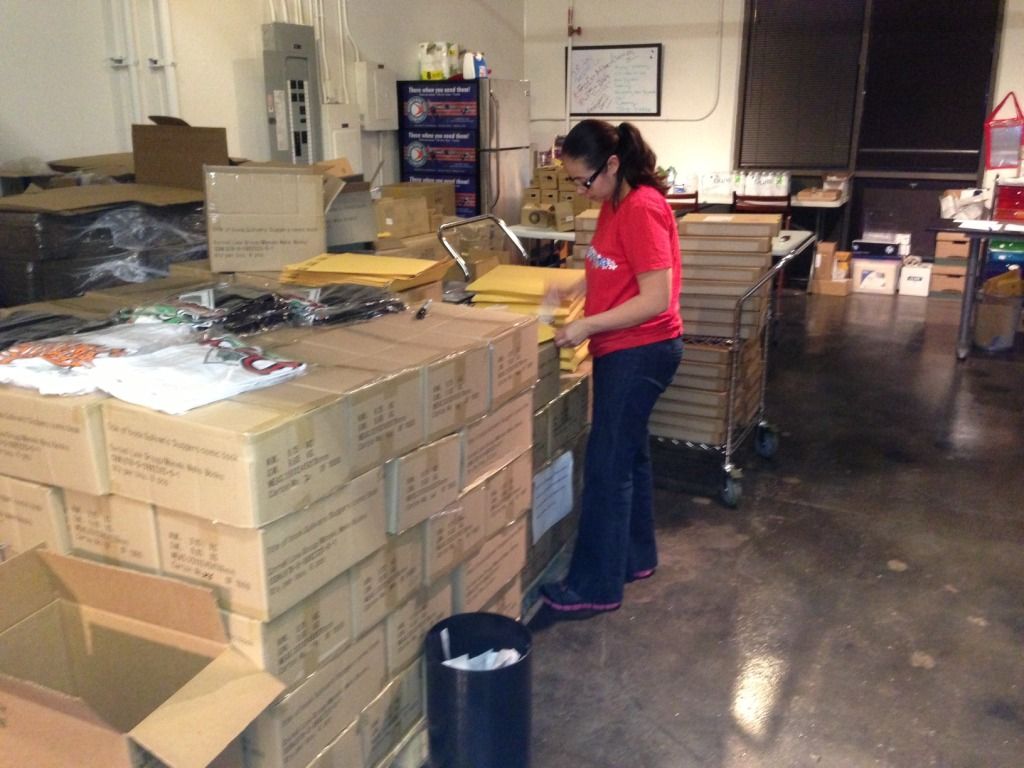
Just a small, small percentage of the orders for the $97K raising Sullivan’s Sluggers Kickstarter Campaign.
POD Channel Distribution
Print On-Demand is a key tool of most small-press creators. POD printing may be the way creators create the product they sell through the above channels. Many POD sites, such as Ka-Blam, ComicsPress, Lulu, and Amazon CreateSpace, also provide the service of including your books in their marketplace. For example, Ka-Blam runs “Indy-Planet.” Create Space will actually get you sold on Amazon.
Upfront Costs: None.
The great thing about POD is that for a few bucks you can create a full-color, professional looking book. Twenty years ago, this was unheard of. And most of these channels don’t even require that. Ka-Blam will let you upload a book and order 0 copies…essentially just letting you put the book in their Indy-Planet catalog for free. If the book sells, they’ll take their cut, and give you the rest.
Barriers to Entry: Very Low
Most POD companies don’t have any barriers to entry (although some won’t publish porn or other “offensive” content…check their submissions details.) The result of this, however, is that these markets are flooded with all sorts of products, with virtually no quality control.
Distributor/Other Cut: High
Each channel will vary, and there are a lot of factors that will play a role here. For example, Tears of the Dragon Volume 1 is being distributed through Amazon as a CreateSpace POD book. My royalty on a $14.99 sale could very between $1.22 (expanded distribution), $4.22 (sold through Amazon.com), or $7.22 (sold through CreateSpace e-store.)
Sales Volume Potential: Very Low
With the exception of perhaps CreateSpace (thanks to the Amazon.com connection), most of these POD sales channels are not very viable for small press creators. The customers of POD services are by and large the authors and publishers themselves…not readers. Expecting your book to sell in any decent quantities simply by listing it in one of these channels will be met with disappointment.
Profit Potential: Very Low
Simple math: Very low sales volume x high distributor cut = low profits.
The Upside
- Very low barriers to entry, and you can get your book made at last for not much money at all!
- No cost to list in POD stores.
- POD service will handle fulfillment (printing, order processing, shipping, etc.)
The Downside
- Remember: Shelf-space has almost no valuable, if everyone can get it.
- If POD service messes up a customer order, may reflect poorly on you, even if you had nothing to do with it.
- If your project (against all odds) goes nuclear, your profit margins will be quite low on each sale.
- If your project doesn’t go nuclear (most likely), but you still get some sales, those will be the channel’s customers (not yours).
Direct Market Micro-Distribution
Micro-distribution is a focused distribution campaign where you, the publisher, directly target a limited number of retailers. These tend to work best when you offer some sort of limited exclusivity or capped print runs, and where there is publisher/creator/retailer co-promotion involved.
Upfront Costs: Medium
For a successful Micro-Distribution campaign, a publisher needs two things: Product and Partners.
First, you need to have the books to sell, and there is cost associate with creating that product.
Identifying and establishing relationships with retail partners is the far more difficult endeavor, and one whose primary cost is time.
Barriers to Entry: Medium
The only obstacle between you and a micro-distribution campaign is the guy behind the counter at the comic shop. Retailers, every single month, are solicited with literally thousands of products. Getting them to say yes to yours is no small feat. And a yes from one retailer gets you shelf-space there…you’re starting from scratch with the next shop on your list. There are some affiliate groups of retailers (ex. the Phantom Variant participating retailers, and the New England Comic Retailer’s Alliance) that have potential for scaling up a little faster. You need to have good product and a good sales pitch to get retailers on-board.
Distributor/Other Cut: Medium
In general, shops will buy books directly at 50% off cover price. (Shipping, I’ve found, is negotiable.)
Note: I don’t count selling on consignment (publishers only gets paid if the book sells in the shop) as micro-distribution…because you’re NEVER going to see that money.
Sales Volume Potential: Low-Medium
Obviously, the total volume of book sales corresponds directly with the number of shops you can get signed on to micro-distribution. In my experience, shops buying habits will vary widely, with some shops ordering as little as 5 books, while others order hundreds. Last year, ComixTribe managed to move about 2,000 books total through micro-distribution channels, with about 50 retailer locations in our network.
Profit Potential: Low*
The profit potential for a micro-distribution campaign hinges primarily on your printing costs. Remember, you’re selling the book to retailers at 50% off of the cover price. So your unit cost needs to be below that to make any profit at all.
For the most part, that means POD is out…but unless your network of retailers is large enough, off-set printing might not make sense here either.
*See the case study below to see how micro-distribution CAN be profitable.
The Upside
- Establishing a direct relationship with retailers, the guys on the front-lines of the comic market, is a great idea.
- “Smallness” is an asset, not a liability. The limited nature of your print runs and retailers that have the book are what make it valuable to retailers.
- The comic shop is the epicenter of comic culture.
- Perception that your book is “real” if it’s in a shop.
The Downside
- A lot of work to get retailers on board. (Expect 10-20 NOs for every YES)
- A lot of work to manage. Even when you have retailers on board, writing them about product, securing orders, securing payment, shipping, etc. can be very time consuming.
- Doesn’t scale well. Managing 5 retailers is easy. 50 is tough. 500 would be a nightmare.
- Micro-distribution tends to support only small print runs…and small print runs sold for 50% off cover doesn’t leave much (or any) room for profit.
Digital Distribution
There are no shortage of Digital Distributors out there. Comixology, Kindle, Nook, iBooks, Comics+, DriveThru Comics, Wowio…there are a LOT of channels, with new ones popping up every month. The future of EVERYTHING is digital…at least in some form or another. But where are we NOW?
Upfront Costs: None to Low
Most digital distributors charge nothing to add your book to their catalog, and instead, take a % of each sale (see below.) There are some services, such as Graphic.ly, that are marketing themselves as “digital conversion services”, who, for a one-time flat fee convert your books to a number of platforms (Nook, Kindle, iBooks, etc.)
Barriers to Entry: None – High
Right now, the top dog in digital comics distribution is Comixology, and their barriers to entry are currently quite high. (In fact, right now, it’s harder to get your book distributed through Comixology than carried by Diamond!) While they are starting to open their doors with the Comixology Submit program, I understand that it will NEVER be their intention to let everything on the platform, and that quality control will be something they will always be interested in maintaining. (Personally, I think that’s a GOOD thing…barriers to entry make getting into the platform have some value.)
On the other hand, there are little to no barriers to entry (besides the initial learning curve of figuring out how to format books for each platform) in many of the other digital channels.
Distributor/Other Cut: Medium-High
While it varies among the platform (and even the device where the purchase happens) in general, publishers will receive between 35%-70% of the sale price for each digital sale.
Sales Volume Potential: Low -High…if it’s FREE
Thousands of ComixTribe books have been downloaded through various digital sales channels. Unfortunately, the vast majority of those were free downloads, with the paid downloads from current digital distribution channels few and far between.
Profit Potential: Low
Thus far, digital sales have severely underwhelmed this small-press publisher. My quarterly checks from digital distribution companies are often in the three digit territory… and that’s including a decimal before two of them!
The big caveat here is that we aren’t selling on Comixology, the biggest digital comics platform, yet. Perhaps that’s the promise land. Still, I have yet to hear any creator ecstatic about his or her digital sales.
The Upside
- Always available.
- No cost to produce.
- Easy to direct potential customers to.
- Millions of digital devices out there.
The Downside
- Perceived value – Digital should be cheaper.
- $0.99 price point seems to be most accepted…but need to sell A LOT of books when you’re getting 35% of a buck for those nickels to add up.
- The biggest channel is tough to get into.
- Low quality control on most channels make it tough for your book to stand out.
Diamond Distribution
Last but not least…Diamond. The big dance, if you will. Diamond Comics Distributors is THE main comics distributor to direct market comic shops. There are others, but we don’t work with them.
Upfront Costs: High
To distribute books through Diamond, it works like this:
- You, the publisher, send solicitation for your book to Diamond.
- Two months later, that info shows up in Diamond’s Previews catalog, which retailers use to order from.
- A month after that, Diamond cuts you a purchase order for a set number of books.
- You, the publisher, use that purchase order (and other deciding factors) to set a print run size for your books with your choice of printer. The more books you print, the cheaper each book gets…but off-set print runs START at about 1000 books, at at least $1,000. So, you, the publisher front that money to get the print run done.
- The printer prints the book, ships to Diamond, and Diamond repackages and ships to its retail customers two weeks later.
- One month after receipt of the books, Diamond cuts you the publisher a check for the books they ordered.
So, the upfront printing costs for distributing a book through Diamond can be quite high.
Barriers to Entry: High
Diamond is only interested in carrying product that its customers (comic book retailers) will buy in large quantities (~$2,500 worth minimum). Your books need to be approved by their submissions panel to get into their catalog. It is harder today to get your book listed than it was in years past…and perhaps even harder to STAY in the catalog by hitting those minimums.
Distributor/Other Cut: High
In general, Diamond buys books at 60% off cover price from publishers.
Sales Volume Potential: Medium to High
To hit Diamond minimums, a $3.99 book must sell 1,566 copies through Diamond. So, around there is your floor of sales through this channel…which, you’ll notice, is pretty high for a floor. As far as the ceiling…well, check the Comichron Charts. No, not the top of the charts…look near the bottom where the small press reside.
Profit Potential: Low to Medium
Here’s the thing about publishing through Diamond…when you’re on the low end of their sales chart, every book counts. Depending on your print run size, small press publishers can make anywhere between $0.50 – $0.90 per floppy, and significantly more on graphic novels.
The Upside
- Direct solicitation pipeline into every comic shop in the world.
- You never have to see the books until they are on the shelves. Printer and Distributor handle that.
- Only way to go to scale.
- Bigger the orders, the more economies of scale work in your favor.
- Legitimacy as a publisher.
The Downside
- Upfront paying for printing costs.
- Far too many shops do not order small press books. (Like 90% or more.)
- Subject to Diamond minimums…risk of cancellation.
- Small-press is second class to major publishers in the catalog…buried in the back, hard to stand out.
- Antiquated ordering system: How many people are actually going to walk into a comic shop to pre-order a book two months in advance?
- Lack of transparency…publisher only gets sales totals, doesn’t know which retailers are buying books.
DOOM and GLOOM?
If you’ve made it this far, you might be thinking: “Uhh…you’ve listed all the channels and NONE of them have a high profit potential. Is it really that hopeless?”
Maybe, maybe not.
Make no bones about it, there are a zillion faster ways to make a buck than making comics. Small press publishing is HARD. Making a decent profit at it is even harder.
And currently, NONE of the above distribution channels alone holds keys to glory and riches. There is no silver bullet when it comes to distribution.
But…
The Real Profit Potential for Small Press is Combining These Channels in Savvy and Strategic Ways
Case Study: Oxymoron Hardcover
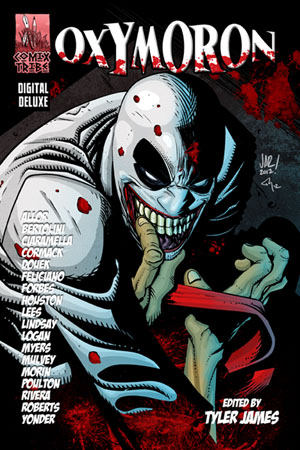 Last year, we ran a successful Kickstarter for the Oxymoron Hardcover, and wrote about our Kickstarter plan here. While the Kickstarter raised a lot of money (more total revenue than the previous two years of ComixTribe sales through all other channels combined!), it actually wasn’t a profitable endeavor. Creator costs, printing and other merchandise costs, shipping fees, etc. made sure of that.
Last year, we ran a successful Kickstarter for the Oxymoron Hardcover, and wrote about our Kickstarter plan here. While the Kickstarter raised a lot of money (more total revenue than the previous two years of ComixTribe sales through all other channels combined!), it actually wasn’t a profitable endeavor. Creator costs, printing and other merchandise costs, shipping fees, etc. made sure of that.
But the Kickstarter, true to its name, was just the beginning.
The Kickstarter allowed the book to be created and funded a significant overprint. It also helped expand our current platform, as many new fans backed the project.
Over the past month, we’ve fired up the ComixTribe micro-distribution network, offering the book to our Preferred Retailers at a deep discount.
In April, the OXYMORON hardcover will be solicited through Diamond at a $24.99 price point. Even at 60% off, that’s still $10 a book, meaning I only need to sell 250 to hit Diamond minimums. And instead of having to front the money to print the books…that’s already taken care of. The Diamond purchase order, less shipping fees, will be pure profit.
What’s more, con season kicks off for us in April, and I’m excited to debut the book at shows this year. An over-sized premium hardcover will be a VERY welcome addition to the con table.
And all the while, I can still sell the book online at Shop.ComixTribe.com.
And then there’s always putting it out through various digital distribution channels. (The DIGITAL DELUXE version looks great on a Kindle Fire, by the way)
Now, this strategy is not with out risk. There’s no guarantee the books will sell anywhere, or that I won’t be stuck with a garage full of Oxymoron hardcovers ten year’s from now.
But if you’re looking for guarantees, small press publishing isn’t for you. And while each of the above distribution channels have their flaws…when pieced together, I believe they can make a nice harmony…and hopefully a buck or two.
Related Posts:
Category: Comix Counsel
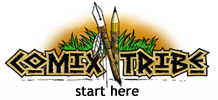
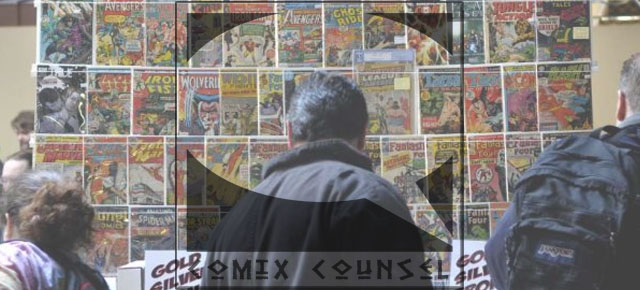
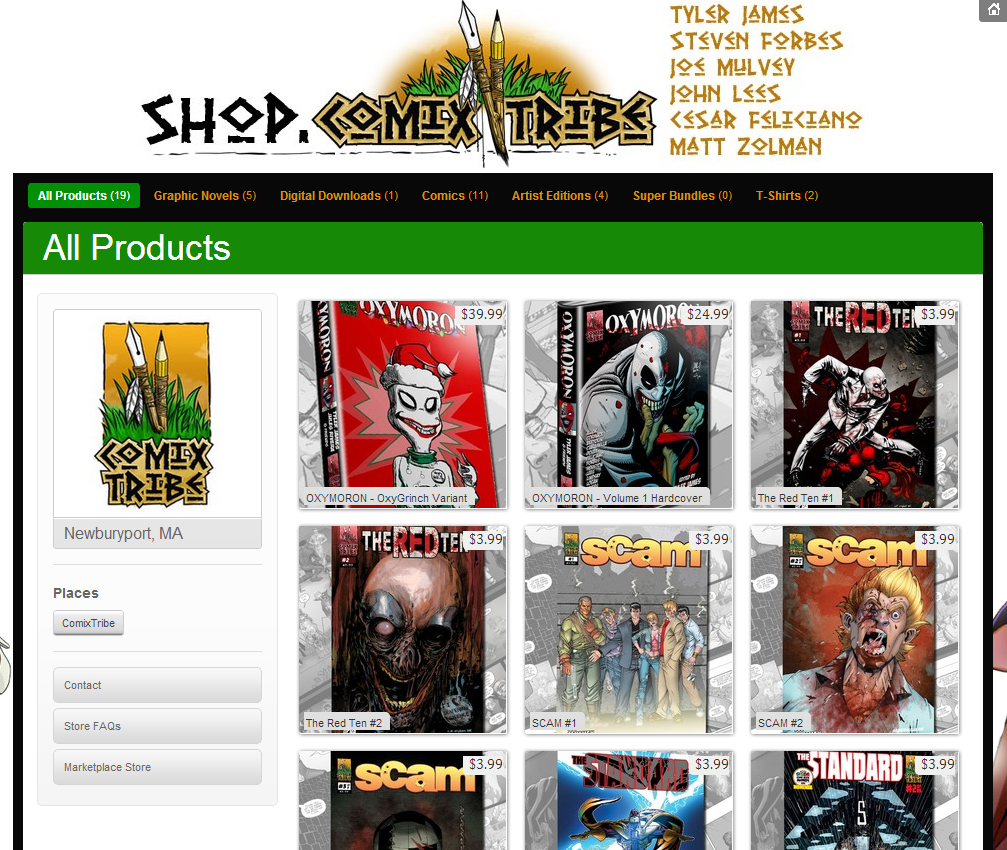
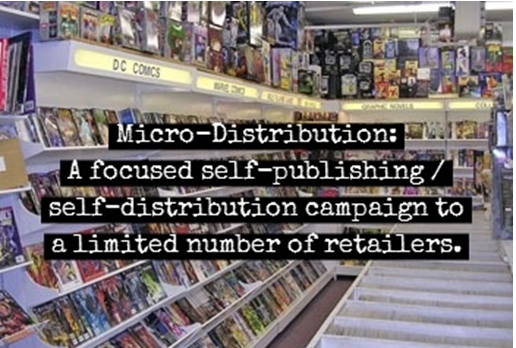



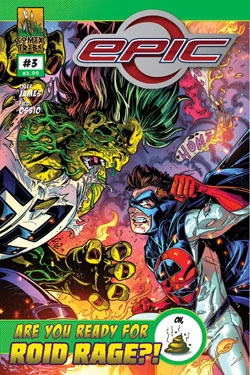

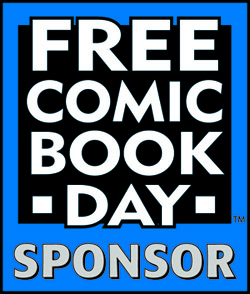


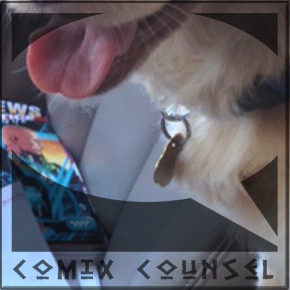
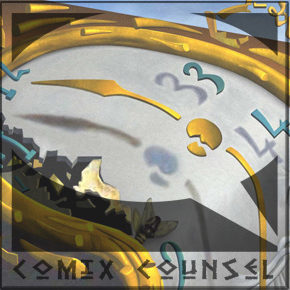
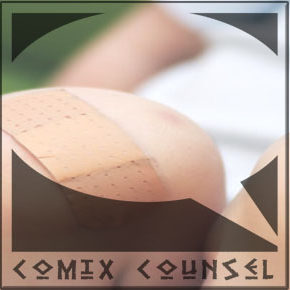
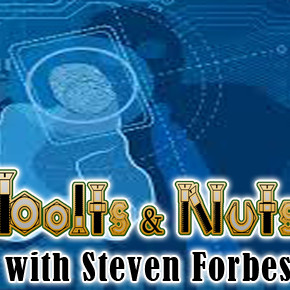
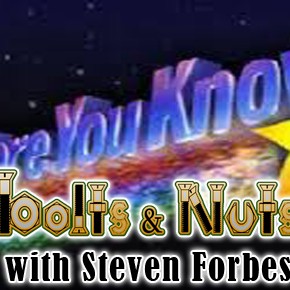
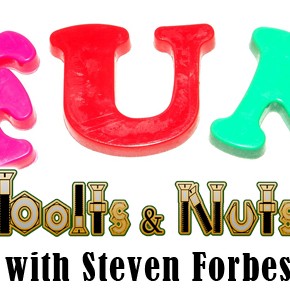
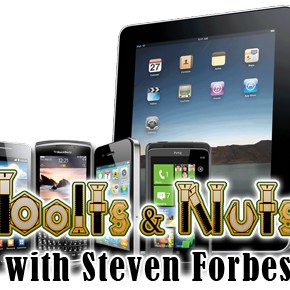
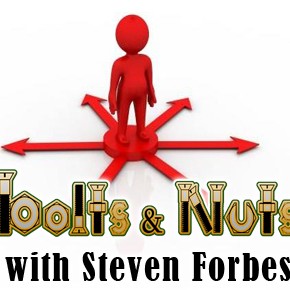
Okay, after reading all this, every Comic Book Artist must realy think about ” the right Way ”
to get a Foot into the Comic Business Industie, but for me it was clear before, my main intention is not to get Rich, for me is the goal to make enough Money for a Normal Living
thats all i want.
I raely enjoy Reading your thoughts about Publishing Comics, that was realy interesting,
something was common for me, other aspects where New and i never heard anything from that before, or was thinking about.
Cheers
Alfred